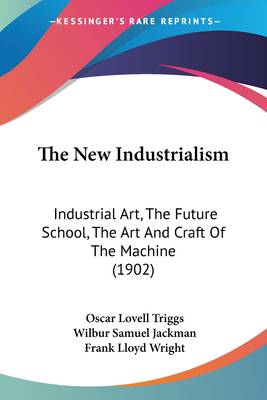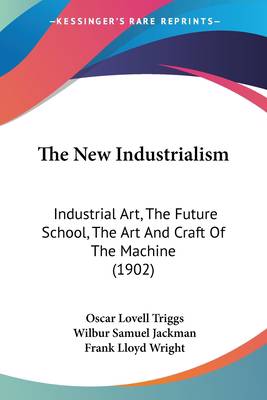
En raison d'une grêve chez bpost, votre commande pourrait être retardée. Vous avez besoin d’un livre rapidement ? Nos magasins vous accueillent à bras ouverts !
- Retrait gratuit dans votre magasin Club
- 7.000.000 titres dans notre catalogue
- Payer en toute sécurité
- Toujours un magasin près de chez vous
En raison de la grêve chez bpost, votre commande pourrait être retardée. Vous avez besoin d’un livre rapidement ? Nos magasins vous accueillent à bras ouverts !
- Retrait gratuit dans votre magasin Club
- 7.000.0000 titres dans notre catalogue
- Payer en toute sécurité
- Toujours un magasin près de chez vous
The New Industrialism
Industrial Art, The Future School, The Art And Craft Of The Machine (1902)
Oscar Lovell Triggs, Wilbur Samuel Jackman, Frank Lloyd Wright
Livre broché | Anglais
33,95 €
+ 67 points
Format
Description
The New Industrialism is a book written by Oscar Lovell Triggs in 1902 that explores the relationship between art and industry in the early 20th century. Triggs argues that industrialization has fundamentally changed the way we think about art, and that artists must adapt to this new reality in order to remain relevant.The book is divided into three sections. The first section, Industrial Art, examines the ways in which art and industry intersect. Triggs argues that industrialization has created new opportunities for artists to create works that are both beautiful and functional, and that this new form of art is essential to the success of modern industry.The second section, The Future School, explores the role of education in this new era of industrial art. Triggs argues that traditional art schools are ill-equipped to teach the skills necessary for this new form of art, and that new institutions must be created to train artists in the craft of the machine.The final section, The Art and Craft of the Machine, delves deeper into the practical aspects of industrial art. Triggs examines the techniques and materials used in industrial art, and provides examples of successful works that have been created using these methods.Overall, The New Industrialism is a fascinating look at the intersection of art and industry in the early 20th century. Triggs' insights are still relevant today, and the book is a must-read for anyone interested in the history of art and design.This scarce antiquarian book is a facsimile reprint of the old original and may contain some imperfections such as library marks and notations. Because we believe this work is culturally important, we have made it available as part of our commitment for protecting, preserving, and promoting the world's literature in affordable, high quality, modern editions, that are true to their original work.
Spécifications
Parties prenantes
- Auteur(s) :
- Editeur:
Contenu
- Nombre de pages :
- 168
- Langue:
- Anglais
Caractéristiques
- EAN:
- 9781120908841
- Date de parution :
- 29-01-10
- Format:
- Livre broché
- Format numérique:
- Trade paperback (VS)
- Dimensions :
- 152 mm x 229 mm
- Poids :
- 231 g

Les avis
Nous publions uniquement les avis qui respectent les conditions requises. Consultez nos conditions pour les avis.






